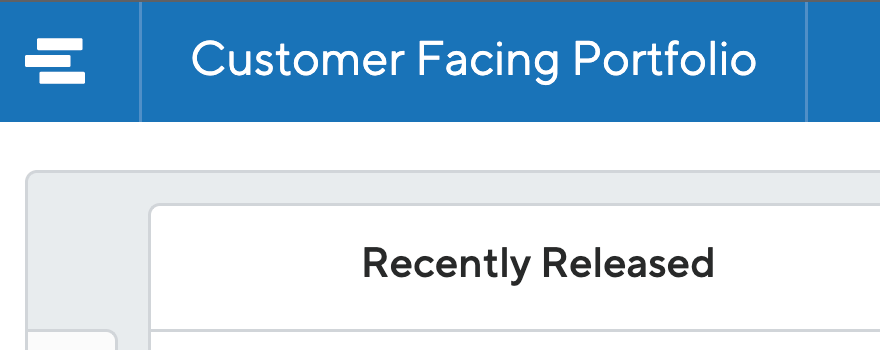Thanks to the Internet, there is no unfindable fact. As information is always at the ready, there’s no excuse not to check sources, find corroborating evidence, and research every decision. Our well-instrumented products are delivering a steady stream of data ready to be sliced, diced, and analyzed — leaving many of us with a bad case of analysis paralysis.
We can learn from others, quantify opportunities, and calculate results. We can experiment, tweak, and modify whenever we’d like; gauging the effects based on hard numbers instead of guesses and anecdotes.
But the challenge is sorting through it all. With so many inputs relentlessly adding to our data, it’s hard to know what’s valuable. We could analyze 24 hours a day and never “finish” anything.
You Have Analysis Paralysis
Our job as product managers requires us to make decisions, prioritize, and plan. While we could theoretically analyze forever, our employers need us to make up our minds and move forward.
But how do we know when enough is enough? When do we need to make up our minds instead of conducting another round of research and review? How do we balance backing up our recommendations with data and making those recommendations?
Despite everyone telling you not to, sometimes you DO need to listen to your gut. Listening is one of the under-appreciated skills of the trade.
How did we get into this situation?
Analysis paralysis is a bit of a self-inflicted wound. For decades, thought leaders, investors, and board members have been championing getting out of the office, talking to customers, and performing extensive market research.
Thanks to analytics packages, we also now get reams of real-time data on exactly how customers are using our products. We can see how users navigate, their dwell times, and where they click. We can tie back behaviors to conversions and purchases. We can cross-reference it all with demographics, personas, and more.
And don’t forget our newfound love of testing and experimentation. We’re no longer restricted to focus groups. We can unleash A/B testing on the masses to measure real-world reactions to various messages, features, and visuals.
We’ve armed ourselves with this supporting data to make our cases bulletproof and overcome imposter syndrome. We don’t want to make mistakes, we want everyone to be happy, and we never want things to be our fault.
No one would scrap these tools to go back to the old days of crystal balls and analyst reports. But it has had some pretty significant side effects. Our workloads have grown when it comes to sifting through all the available data. Plus there’s now an expectation that every move we make has statistical evidence predicting its impact.

How Analysis Paralysis Negatively Affects You
When too much data breeds indecision, it takes a toll on your ability to be an effective leader and get your job done.
It reduces your confidence. Once upon a time, you felt sure of yourself. Now you only feel prepared if you show up armed with a PowerPoint chock full of charts and graphs backing up your ideas.
It slows you down. When challenged, you retreat and pledge to “look at the data” even when the answer is obvious. When there’s a crisis requiring immediate action, your quick-twitch mental muscles have atrophied. As a result, you’ll either make poor decisions or no decisions at all.
It presents too many options. There’s a time for data, and a time for common sense. Narrowing the field down to a few choices shouldn’t take long, but overanalyzing things makes this a far more daunting task than necessary.
It leaves you unsatisfied. But if you’re always seeking the best solution, you’re never positive there’s not an even better choice still out there. Although there may still be room for improvement, this can rob you of both decisiveness and happiness.
How Analysis Paralysis Negatively Affects Your Roadmap
When you’re trapped in this unfortunate state, roadmapping becomes an unproductive grind. Instead of using rational, logical thought, you begin scrutinizing everything. You poke holes in perfectly adequate decisions.
You are obsessing over the details.
Once you get in the habit of analyzing everything, it’s hard to take any shortcuts. Yet the demands of the job require you to use your time wisely. If you divert too much energy toward items with minimal impact, you either won’t finish, or you’ll give important things short shrift. It simply isn’t scalable.
You are aiming for perfection.
There’s no point trying to create a perfect product roadmap because there’s no such thing. Even if you somehow manage to do it, that perfection will be short-lived as we know things will change. Shoot for “pretty good” and don’t sweat the small stuff.
You are leaving everything on the table.
When your backlog is overflowing with dozens (or hundreds) of items, it’s not easy to whittle things down. But quickly dismissing the undoable, unrealistic, and unnecessary items lets you spend more time on stuff that has a shot of making it on your roadmap.
You are damaging your credibility.
While you should leverage data where appropriate, you’re also supposed to be an expert when it comes to your product. If you’re unable to be authoritative about your domain, you’re sowing doubts amongst colleagues and stakeholders.
The Key to Defeating Your Roadmap Process Analysis Paralysis is Intuition
Shepherding your roadmap along takes a combination of critical thinking and visionary instincts. Here are some tips to keep you from drowning in data by utilizing your intuition.
Take baby steps.
Roadmaps are not built in a day— at least they shouldn’t be. A roadmap breaks down the steps to create the ultimate vision of the product, and your roadmapping process has levels of its own. Make them as small and manageable as possible. By notching incremental progress, you can bust through those mental blocks and build momentum in the process.
Save in-depth analysis for the big stuff.
Not every decision requires the same level of rigor and research. Data should inform critical strategic moves. But smaller items with limited ramifications can be made without exhaustive study.
Lean on your product vision.
With well-defined goals and objectives, many decisions about prioritization should be no-brainers. Don’t make things harder than they need to be. Referring back to themes and North Star metrics can also help.
Eliminate bad options quickly.
Don’t waste time considering things that you know are bad ideas or unrealistic. Sorting through viable choices is hard enough as it is!
Embrace deadlines.
While roadmapping shouldn’t involve split-second decisions, it shouldn’t drag on needlessly. Allocate a limited amount of time for each phase of the process. Force yourself and your stakeholders to make up their minds and move forward.
Get out of your head.
Sometimes it’s hard to break the cycle of self-doubt and panic about making the wrong decision. So take your quandary to a colleague or trusted friend and bounce it off them. An outside opinion can help you snap out of it and push things along. If you’ve got a team under you, you can also try delegating decisions while retaining veto power.
Mitigate the impacts.
Don’t put all the available development resources onto a single initiative you’re not quite sure about. Hedge your bets and get to an MVP with a skeleton crew. This way, if it doesn’t pan out, you haven’t gone “all in” on a questionable call.
Remember, nothing is permanent.
Near-term items on your roadmap are pretty likely to play out according to plan. But after six months it’s a fair bet that things are going to get shaken up. You’re going to be frequently reviewing and updating your roadmap again. There’s less need to shoot for perfection for those longer-term items.
Trust yourself.
You talk to customers all the time, so you know their problems. Don’t couch statements with “I think.” Command authority and be decisive based on what you know from those conversations.
Free Yourself from the Analysis Paralysis Trap
When you’ve reached a decision standstill, take a step back. Contemplate whether you genuinely need more information, or if you need just to make a judgement call with your gut and move on. Don’t fear making the “wrong” decisions on your roadmap. Pivoting will happen whether you do all your research or hardly any at all.






